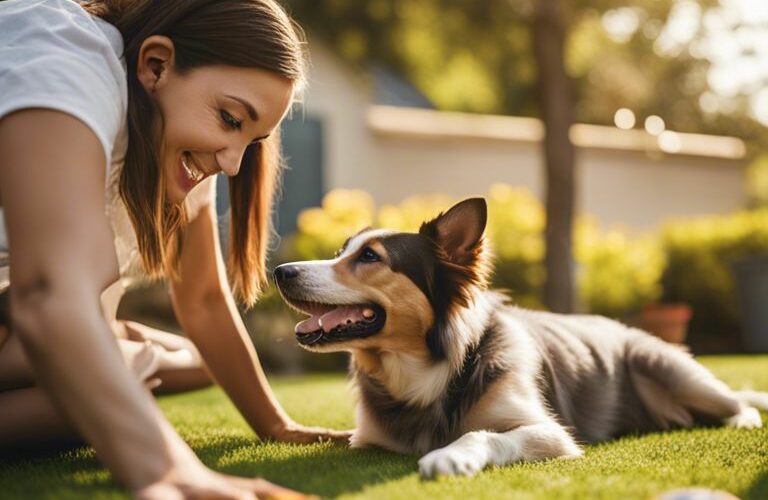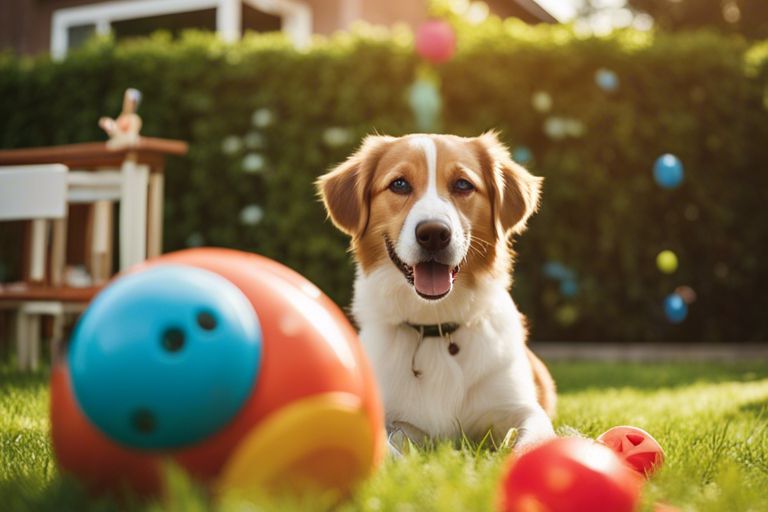Supervising your dogs during their playtime is crucial in ensuring their safety and overall well-being. Many dog owners underestimate the importance of actively engaging in their dog’s playtime, resulting in potential accidents or behavior issues. Proper supervision not only prevents physical harm to your dogs or others, but it also helps in fostering positive behaviors and socialization. In this blog post, we will discuss key strategies and tips on how to effectively supervise your dogs during playtime, ensuring a safe and enjoyable experience for both you and your furry companions.
Table of Contents
Key Takeaways:
- Set clear boundaries: Establish rules and boundaries for playtime to ensure your dog understands expectations.
- Provide supervision: Always keep a close eye on your dog during playtime to intervene if necessary and prevent any potential conflicts or injuries.
- Use positive reinforcement: Encourage good behavior with treats and praise, and redirect any negative behaviors with calm and assertive corrections.
- Know your dog’s triggers: Understand what triggers your dog’s aggression or excitement, and avoid situations that may lead to unwanted behavior during play.
- Take regular breaks: Allow your dog periodic rest breaks to prevent overstimulation and keep playtime safe and enjoyable for both you and your pet.
Understanding Your Dog’s Play Behavior
Some dogs love to play and engage in fun, interactive activities with their owners. However, it is essential to understand your dog’s play behavior to supervise playtime effectively. By recognizing the signs of safe versus risky play and understanding common play styles and signals, you can ensure a positive and secure play environment for your furry friends.
Recognizing Safe vs. Risky Play
Your first step in supervising your dogs during playtime is to recognize the difference between safe and risky play. Safe play is characterized by loose, relaxed body language, with both dogs taking turns being the chaser and the chasee, and frequently taking breaks to shake off and reset. On the other hand, risky play may involve intense, stiff body language, prolonged body slamming, aggressive barking, and persistent one-sided chasing. It is crucial to intervene if you observe signs of risky play to prevent potential conflicts or injuries.
Common Play Styles and Signals
An understanding of common play styles and signals in dogs can help you better supervise their playtime. Play styles can range from rough-and-tumble wrestling to gentle chasing, and signals may include play bows, paw slaps, and bouncy movements. Learning to recognize these signals will enable you to distinguish between friendly, reciprocal play and potential signs of discomfort or aggression.
Play should be fun and enjoyable for all dogs involved, and understanding their play styles and signals can help create a harmonious play environment. By observing their body language, interactions, and play signals, you can ensure a safe and positive playtime for your canine companions.
Setting Up a Safe Play Environment
Obviously, ensuring a safe play environment for your dogs is crucial when supervising their playtime. By setting up the right location and necessary equipment, you can create a secure and enjoyable space for your pets to play in.
Choosing the Right Location
One of the most important factors in supervising your dogs during playtime is choosing the right location. Look for an area that is spacious, free of hazards, and enclosed to prevent your pets from wandering off. Consider both indoor and outdoor options based on your dogs’ needs and preferences.
Necessary Playtime Equipment
To ensure a safe play environment, it is essential to have the necessary playtime equipment for your dogs. This includes durable toys, such as ropes and balls, that are suitable for their size and breed. Additionally, consider using a playpen or gates to create boundaries and prevent any potential accidents during playtime.
Play close attention to the quality and condition of the playtime equipment to avoid any choking hazards or injuries for your dogs. Regularly inspect and replace any damaged or worn-out toys to maintain a safe play environment for your pets.
Active Supervision Strategies
For effective supervision of your dogs during playtime, it is important to actively engage in the process. This means being present and attentive while your dogs interact with each other or with their toys. It also involves establishing rules and boundaries, as well as interrupting any unsafe play behaviors. To learn more about the importance of active supervision, check out The Rules of the Game: How to Keep Your Puppy Safe During Playtime.
Establishing Rules and Boundaries
Establishing clear rules and boundaries is crucial for ensuring safe and enjoyable playtime for your dogs. This can include designating specific play areas, setting limits on rough play, and teaching your dogs to respond to certain cues or commands. By consistently enforcing these rules and boundaries, you can help prevent potential conflicts and keep playtime fun and safe for all dogs involved.
Interrupting Unsafe Play
Supervision also involves actively monitoring play and being prepared to interrupt any unsafe behaviors. This can include stepping in if play becomes too rough, if one dog seems distressed, or if toys are being played with inappropriately. Interrupting unsafe play is important for preventing injuries and maintaining a positive play environment for all dogs.
It is essential to be proactive in identifying and addressing any potential risks during playtime to ensure the safety and well-being of all dogs involved. By actively supervising and intervening when necessary, you can create a positive and secure play environment for your dogs.
Training Tips to Enhance Playtime
Now, let’s explore some training tips that will help supervise your dogs effectively during playtime:
- For teaching basic commands
- For encouraging positive play habits
Though these tips may take some time and patience to implement, they will ultimately make playtime more enjoyable and safe for your pets.
Teaching Basic Commands
For optimal supervision during playtime, it is crucial to teach your dogs basic commands such as “sit,” “stay,” and “come.” These commands will allow you to control your pets and redirect their behavior when necessary.
Encouraging Positive Play Habits
Any playtime with your dogs should include positive reinforcement and rewards for the desired behavior. This will help reinforce good play habits and discourage any aggressive or inappropriate behavior during play.
Encouraging positive play habits through consistent training and rewards will create a safe and enjoyable play environment for both you and your dogs.
Conclusion
Considering all points, supervising your dog during playtime effectively requires attention, observation, and a proactive approach. By setting clear boundaries, providing appropriate toys and activities, and intervening when necessary, you can ensure the safety and well-being of your dog while they engage in play. It is important to remain vigilant and be aware of any signs of aggression or exhaustion in your dog, and to always be ready to step in if play becomes too rough or overwhelming. With consistent supervision, you can create a positive and enjoyable playtime experience for both you and your dog.
FAQ
Q: How can I effectively supervise my dog during playtime?
A: The key to effective supervision during playtime is to be actively present and engaged with your dog. Stay in close proximity to your dog, and keep a watchful eye on their behavior and interactions with toys or other dogs. Avoid distractions such as using your phone or reading. Intervene when necessary to redirect their behavior and ensure a safe and enjoyable playtime experience.
Q: What are some tips for creating a safe play environment for my dog?
A: To create a safe play environment, remove any hazards or potential dangers from the area where your dog will be playing. This includes ensuring there are no small objects that could be swallowed, securing any electrical cords or wires, and removing any toxic plants. Additionally, provide appropriate toys and activities to keep your dog engaged and prevent boredom, which can lead to destructive behavior.
Q: How can I train my dog to play safely with other dogs?
A: Socializing your dog with other dogs is important for their overall well-being, but it requires supervision and positive reinforcement. Start by introducing your dog to well-behaved and vaccinated dogs in a controlled environment. Pay attention to their body language and intervene if either dog becomes overly aggressive or anxious. Use treats and praise to reward good behavior and gradually increase the length of play sessions as your dog becomes more comfortable and confident in their interactions with other dogs.











Add comment